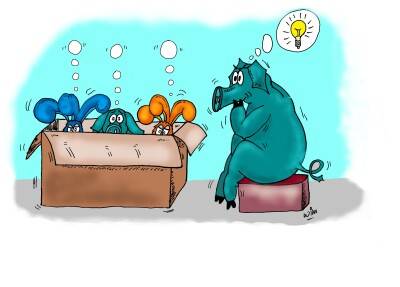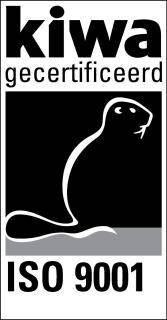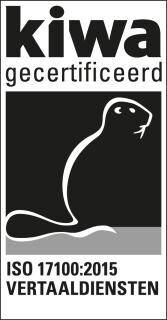
Five tips for successful target group communication
To achieve effective marketing communication, you need to know precisely who your product target group is. After all, the experienced CEO of a large agricultural organisation should be addressed differently to say, a young farmer just starting out in the industry.
In this chapter we’ll provide some useful tips for defining your target groups and optimising your methods of communication with them. An important point that needs to be addressed is that multiple marketing voices should be implemented. It’s highly likely that you sell several different products, each with their own specific target group. It’s even possible for the customer group of one specific product to be extremely diverse. To maintain an overview and to effectively target your intended groups, it’s useful to divide the market up into segments. Tailor your tone of voice, message, medium and design to specific buyers of your products, and not only to your company’s customers in general. This is the most important lesson in this chapter, but we have a few more useful tips to share with you.
Tip 1 Use market research and market segmentation
Market mapping can deliver deeper insight into the demand for your product and reveal the identity of your customers. General market research provides a good understanding of this, but for successful targeted marketing it’s important to divide your target groups on the basis of relevant characteristics. This is known as market segmentation, a recurring concept throughout this book. At this point, it’s important to know that market segmentation is an effective way of gaining a clear picture of your target groups. You can segment the market according to geographical data, but also on the basis of demographic variables such as education and income for example. It’s even more effective if you create fictitious archetypes of the members of the various segments, complete with a user need and story. These so-called personas literally give your target audience a face and a name.
The advantage of market segmentation is that allows you to perfectly attune your marketing strategy to these different target groups. You can make these segments as general or specific as required, as long as you ensure that your communication matches the characteristics and interests of your consumers. Your customer service levels can also benefit from market segmentation, as it allows you to clearly determine how to address your existing customers, and which channels to use.
Tip 2 Get connected with your target group
Personas give a good impression of your target group and are ideal for setting up your marketing strategy. It’s an obvious point to make, but these aren’t real people. So avoid making caricatures of your customers and potential customers, but get connected and create personal contact with them. Think about exhibiting at trade fairs and attending other events where you can meet your target groups personally. In other words: come down from your ivory tower and talk to your customers. Show genuine interest in their needs and challenges, and explain to them in person why you have the perfect solution.
These face to face opportunities offer a host of advantages that remote marketing strategies don’t. Participation at large trade fairs remains an excellent way to increase brand awareness, as these events are usually accompanied by large scale communication campaigns. Additionally, conversations with your end customers provide feedback and often new ideas on how your products are received and perform in practice. Use this to your advantage and integrate these insights into your marketing strategy too.
Tip 3 Use copywriters and translators who know the target group
Once you have a clear picture of your target groups and have divided the market into bite size segments, you are ready for the next step: creating content. By now, you’ll pretty much know what message you want to convey and to which prospects, but integral to this is choosing the right tone of voice. It’s important that copywriters, translators and other content creators know your target groups inside out. Ideally, they are part of the group themselves. A minimum requirement is that they speak the language and are aware of the concerns and needs of the target group. This will optimally convey the message and meaning of your content, and your customers will feel that they are being taken seriously and understood.
Professional communication and translation agencies such as AgroLingua have an extensive network of experienced, expert translators and copywriters at their disposal. This ensures they can always provide you with content that strikes exactly the right tone, leading to an effective and lucrative marketing strategy.
Tip 4 Choose a format and design that appeals to your target group
The design of your brochure, website or advertisement already makes a clear statement to an audience, before they've read a single word. As you're undoubtedly aware, you only have one chance to make a first impression. So pay sufficient attention to the visual aspect of your communication too. A graffiti font is unlikely to appeal to CEOs and other policy makers, but will resonate more with a younger target group. Critically examine the design so it strikes the right balance between text and images, and adapt the text-to-image ratio to suit the specific audience.
The infographic is an excellent way of sharing complex information in a visually appealing way. One of the benefits is that it effectively forces you to formulate your message concisely and in an easy-to-digest format, thereby increasing the impact of the message. Combine the text with easy to follow graphics and diagrams, using a design suitable to your target group. And again, use specialists: designers and illustrators who have experience in marketing and storytelling, with intimate knowledge of the market and your customers.
Tip 5 Use the media channels most popular with your target group
To optimise the delivery of your message, it’s vital to use the right media channels. Choose the channels that are most frequently used by the intended target group to maximise your reach. This may involve traditional print media, such as brochures, posters and newspaper advertisements, but also digital channels such as your own website and social media. The advantage of the latter is that you’re always engaged with your audience, because they can respond directly and personally to your communication. This interaction provides you with first-hand knowledge of the trends and interests of your target group. You can even use polls, which are especially popular on Twitter, as ‘mini market research’ opportunities, to fine tune your marketing strategy.
Be aware though, that social media is now also a broad term and that you’ll need to differentiate your presence in this domain too. LinkedIn is the preferred platform if you want to take a more business-like approach, whilst platforms like Instagram and Facebook allow you to interact with potential prospects with more amusing and light-hearted posts.
Want to know more? Then get in touch with the translation and localisation specialists at AgroLingua!
Back to blogs





